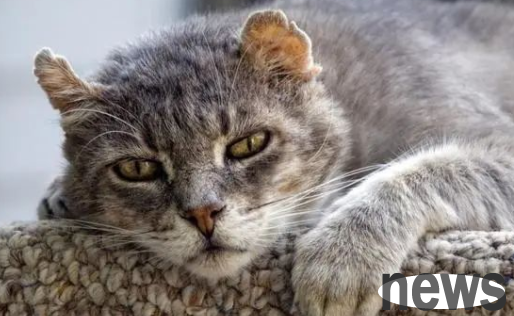Your cat is your loyal companion and has spent many happy and sad times with you. But, what should you do when it unfortunately leaves the world? You may feel sad, helpless, angry, guilty, and even want to deny its death. These are normal emotional...
Your cat is your loyal companion and has spent many happy and sad times with you.
But, what should you do when it unfortunately leaves the world?
You may feel sad, helpless, angry, guilty, and even want to deny its death.
These are normal emotional reactions, and you don’t have to blame yourself or suppress it.
You need to give yourself some time to mourn your cat, and maybe share your feelings with your family, friends, pet doctor or psychological counselor.
However, you cannot ignore the body of your cat, it needs to be properly handled to avoid environmental pollution and spread of disease.
So, how should you deal with your cat's corpse?
Here are several common methods that you can choose according to your actual situation and preferences.

1. Cremation
Creamification is the process of placing the cat's body in a high-temperature furnace and turning it into ashes. The advantage of
cremation is that it can save space and preserve the ashes of your cat as a souvenir. The disadvantage of
cremation is that it costs a certain amount of money, and you may not be sure if the ashes you receive are really your cat's.
cremation is divided into two types: collective cremation and separate cremation.
Collective cremation refers to cremating the bodies of multiple pets together, then mixing the ashes together, or scattering them somewhere.
The cost of collective cremation is relatively low, but you can't get back the ashes of your cat.
Single cremation refers to the individual cremation of your cat's body, and then the ashes are placed in a special box or urn and handed over to you.
The cost of cremation alone is relatively high, but you can keep the ashes of your cat, place them where you like, or make them into accessories, portraits, etc.
If you choose cremation, you need to contact a professional pet cremation service agency, which will provide door-to-door pickup, transportation, cremation, return and other services.
You can also choose to send it to the cremation site yourself, or participate in the cremation process yourself to express your final farewell to your cat.
2. Burial
Burial is the process of burying the cat's body on the land. The advantage of burial is that it can bring your cat back to nature, or plant flowers, trees, grass, etc. on the cemetery as a commemoration. The disadvantage of burial is that it may be affected by land ownership, legal provisions, animal excavation, soil erosion, etc., and you may not be able to visit your cat frequently.
The burials are divided into two types: public cemeteries and private land.
Public cemetery refers to a burial place specially provided for pets, usually with fixed locations, specifications, fees, etc. The advantage of
The public cemetery is that you can enjoy professional services and communicate with other pet owners. The disadvantage of
The public cemetery may be limited by space, time, management, etc., and you may not be able to choose the cemetery you prefer.
Private land refers to land you own or rented, which can be your home yard, garden, farm, etc.
The advantage of private land is that you can freely choose the place, method, decoration, etc. of burial, and you can also visit your cat at any time.
The disadvantage of private land is that you may encounter problems with land ownership, legal provisions, neighborhood relations, etc., and you may not be able to retain your land for a long time.
If you choose to bury, you need to pay attention to the following points:
1. Dispose your cat's corpse as soon as possible to prevent rotting, odor, attracting insects, etc.
2. Wrap your cat's body in cloth or paper, put it in a wooden box or plastic bag, or without any container.
3. Choose a suitable burial place, preferably a cool, dry place away from water sources, roads, buildings, etc.
4. Dig a pit deep enough to have a depth of at least 60 cm to prevent being dug out by animals or washed away by water.
5. Put your cat's body into the pit and put some things your cat likes on it, such as toys, blankets, food, etc., or you can say some words to express your love and gratitude.
6. When filling the pit with soil, you can make a mark on it, such as crosses, stones, wreaths, etc., or you can plant some flowers, trees, grass, etc. as a commemoration.

III. Donation
Donation refers to the process of donating the body of a cat to scientific research institutions, educational institutions, animal protection organizations, etc., so that they can contribute to the welfare of humans or other animals. The advantage of donation is that it can make your cat's death meaningful and can also help other lives. The disadvantage of donation is that you can’t see your cat again and know how its body will be handled.
Donation is divided into two types: free donation and paid donation.
Free donation means that you donate your cat's body to an institution completely free of charge without asking for any return.
The advantage of free donation is that it can reflect your selflessness and kindness, and can also save you money. The disadvantage of
The free donation is that you may not be able to choose the institution you want to donate, nor can you get any proof or thanks.
Paid donation means that you donate your cat's body to an institution, but you require a certain amount of compensation, such as money, gifts, certificates, etc.
The advantage of paid donations is that they can get some material or spiritual rewards, and they can also have more choices. The disadvantage of paid donations is that you may be seen as greedy or immoral, or you may encounter some scam or risk.
If you choose to donate, you need to pay attention to the following points:
1. Understand the background, reputation, purpose, purpose, etc. of the institution you want to donate in advance, and avoid donating to illegal or irregular institutions..
2. Sign a clear agreement with the institution to clarify the rights and obligations of both parties, such as the method of donation, time, expenses, returns, proof, etc.
3. Dispose your cat's corpse as soon as possible to prevent rotting, odor, attracting insects, etc.
4. Wrap your cat's body in cloth or paper, put it in a wooden box or plastic bag, or without any container.
5. Leave your cat's body to the staff of the agency and say something during the handover to express your love and gratitude.